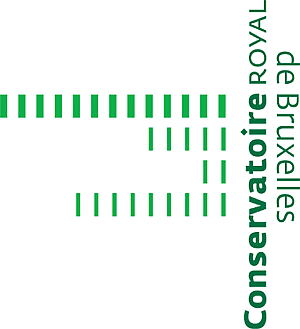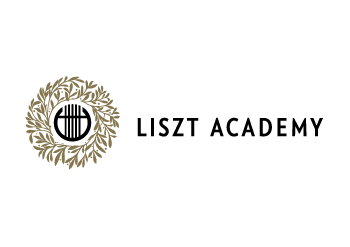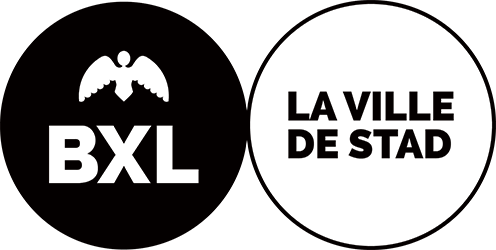Further information
-
assessment
Semester grade S -
level
Beginner -
 Completed Semestermust be completed in the first semester BA Music Theory Major
Completed Semestermust be completed in the first semester BA Music Theory Major -
How many semesters does the course last?
2 (second semester has a different topic area) -
hours per week
90 mins per week -
 Link of the course
Link of the course -
 Target group of courseMusic theory students, beginner
Target group of courseMusic theory students, beginner -
 credits8
credits8 -
 Type of CourseSeminar
Type of CourseSeminar -
Degree Level
Bachelor -
 e-learning-elementsDropbox repository with scores, audio, and literature
e-learning-elementsDropbox repository with scores, audio, and literature -
Course
Mandatory -
students #
3-6 student -
Hours per year
21 hours (à 60 mins) -
BIBLIOGRAPHY
Corelli Berardi, Angelo (1687), Documenti armonici, Bologna. Berardi, Angelo (1689), Miscellanea musicali, Bologna. Bononcini, Giovanni Maria (1673), Musico prattico, Bologna. Gasparini, Francesco (1708), L’armonico pratico al cimbalo, Bologna. Penna, Lorenzo (1684), Li primi albori musicali, Bologna. Allsop, Peter (1992), The Italian ›Trio‹ Sonata. From its Origins until Corelli, Oxford: Clarendon Press. Allsop, Peter (2009), Arcangelo Corelli und seine Zeit, Laaber: Laaber. Edler, Florian (2006), Der Dur‐Moll‐Kontrast in der italienischen Triosonate, in: ZGMTH 3/3, 307–326; http://www.gmth.de/zeitschrift/artikel/237.aspx Marx, Hans Joachim (2000), Corelli, Arcangelo, in: MGG2, Personenteil, Bd. 3, Kassel/Stuttgart, 1573–1598. Menke, Johannes (2006), Kontrapunkt im 17. Jahrhundert – ein Lehrgang, ZGMTH 3/3 (2006), 341–353; http://www.gmth.de/zeitschrift/artikel/239.aspx Menke, Johannes (2011), Die Familie der cadenza doppia, in: ZGMTH 8/3 (2011), 389–405; http://www.gmth.de/zeitschrift/artikel/654.aspx Menke, Johannes (2014), The Skill of Musick. Handleitungen zum Komponieren in der Historischen Satzlehre an der Schola Cantorum Basiliensis, in: Basler Jahrbuch für historische Musikpraxis 2010, Winterthur, 149–167. Olivieri, Guido/Vanscheeuwijck, Marc (2015, Hrsg.), Arcomelo 2013: Studi nel terzo centenario della morte di Arcangelo Corelli (1653–1713), Lucca: LIM. Pavanello, Agnese (2015, Hrsg.): Corelli als Modell. Studien zum 300. Todestag von Arcangelo Corelli (1653–1713) (Basler Jahrbuch für Historische Musikpraxis 37), Winterthur: Amadeus. Bach Arnecke, Jörn (2010): Dispositio, Elaboratio und Decoratio – Aspekte des Fugenthemas bei Johann Sebastian Bach. ZGMTH 7/2, 165–178. https://doi.org/10.31751/535 Deppert, Heinrich: Grundsätze zum Studium der Kompositionstechnik in den Fugen von Johann Sebastian Bach. 1. Teil, in: ZGMTH 5/2–3 (2008), 287–312; http://www.gmth.de/zeitschrift/artikel/304.aspx Dreyfus, Laurence: Bach and the Patterns of Invention. Cambridge, Mass. [u.a.] : Harvard University Press 1996. Dürr, Alfred, Johann Sebastian Bach, Das Wohltemperierte Klavier. Kassel: Bärenreiter 1998, 62020. Ledbetter, David: Bach’s Well‐tempered Clavier. The 48 Preludes and Fugues, New Haven 2002. Keller, Hermann: Das Wohltemperierte Klavier von Johann Sebastian Bach. Werk und Wiedergabe [1961], München: dtv 1987. Neidhöfer, Christoph /Schubert, Peter: Baroque Counterpoint, Upper Saddle River, NJ: Pearson Prentice Hall 2006. Rampe, Siegbert (Hrsg.): Bach. Das Wohltemperierte Klavier I – Tradition, Entstehung, Funktion, Analyse. Ulrich Siegele zum 70. Geburtstag, München: Katzbichler 2002. Rampe, Siegbert: Bach‐Handbuch, Bd. 4. Bachs Klavier‐ und Orgelwerke, Laaber: Laaber 2007. Siegele, Ulrich: Johann Sebastian Bach komponiert Zeit. Tempo und Dauer in seiner Musik, Bd. 3: Wohltemperiertes Klavier I und II, Hamburg 2017. Beethoven Caplin, William E.: Classical Form: A Theory of Formal Functions for the Instrumental Music of Haydn, Mozart, and Beethoven, New York: Oxford University Press 1998. Diergarten, Felix/Markus Neuwirth, Formenlehre, Laaber 2018. Hepokoski, James/Darcy, Warren: Elements of Sonata Theory. Norms, Types, and Deformations in the Late Eighteenth‐ Century Sonata, Oxford/New York: Oxford University Press 2006. Ratz, Erwin: Einführung in die musikalische Formenlehre, Wien: Universal Edition 31973. Rosen, Charles: Der klassische Stil [1971], Kassel: Bärenreiter 1983. -
ONLINE CATALOGUE
WITH CONTENTS -
evaluation grid
-
evaluation grid
and document
Teacher(s)
Christian Utz
current position
University Professor
Institution
University of Music and Performing Arts Graz
Be a part of our european project !
This European project (KA 203 Strategic Partnership) created by Salvatore Gioveni promotes cross-border collaboration in the field of Music Theory through sharing knowledge and transferring pedagogical innovation. It thus responds to a lack of centralised source and framework to deepen reflection by means of cross-disciplinary study at European and international level.
There is a significant wealth of educational practices from one country to another in this sector, especially in terms of harmonic musical notation and analysis. However, HMEI's are facing the nonexistence of a European network for pedagogical staff in Music Theory so far. To improve the situation, the project will among other things develop several intellectual outputs such as Online Platform (IO 1), an EU Bibliography (IO 2), a Repository Courses (IO 3), a Multilingual Glossary (IO 4) and an Exchange Online Learning Platform.
Besides the Conservatoire royal de Bruxelles as leader and manager of the project, the following partner institutions are involved: Music Academy S. Moniuszki Gdańsk (Gdańsk, Poland), F. Liszt Academy of Music Budapest (Budapest, Hungary), Estonian Academy for Music and Theatre (Tallinn, Estonia), HfMTh "Felix Mendelssohn Bartholdy" (Leipzig, Germany).
 | 2024
| 2024








